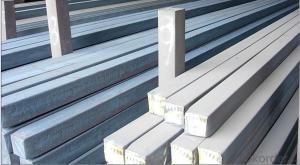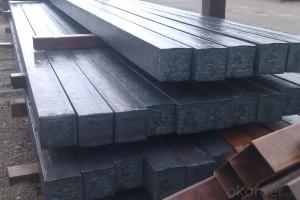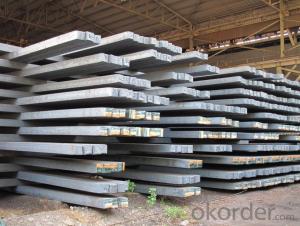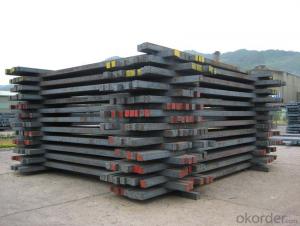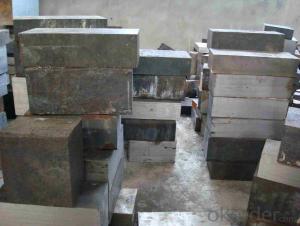Hot Rolled Square Steel Billet 3SP Standard 130mm
- Loading Port:
- Shanghai
- Payment Terms:
- TT OR LC
- Min Order Qty:
- 2000 m.t.
- Supply Capability:
- 10000 m.t./month
OKorder Service Pledge
OKorder Financial Service
You Might Also Like
Structure of Hot Rolled Square Steel Billet 3SP Standard 130mm

Description of Hot Rolled Square Steel Billet 3SP Standard 130mm
PPGI is made by cold rolled steel sheet and galvanized steel sheets as baseplate, through the surface pretreatment (degreasing, cleaning, chemical conversion processing), coated by the method of continuous coatings (roller coating method),
and after roasting and cooling. Zinc coating: Z60, Z80, Z100, Z120, Z180, Z275, G30, G60, G90
Alu-zinc coating: AZ60, AZ80, AZ100, AZ120, AZ180, G30, G60, G90
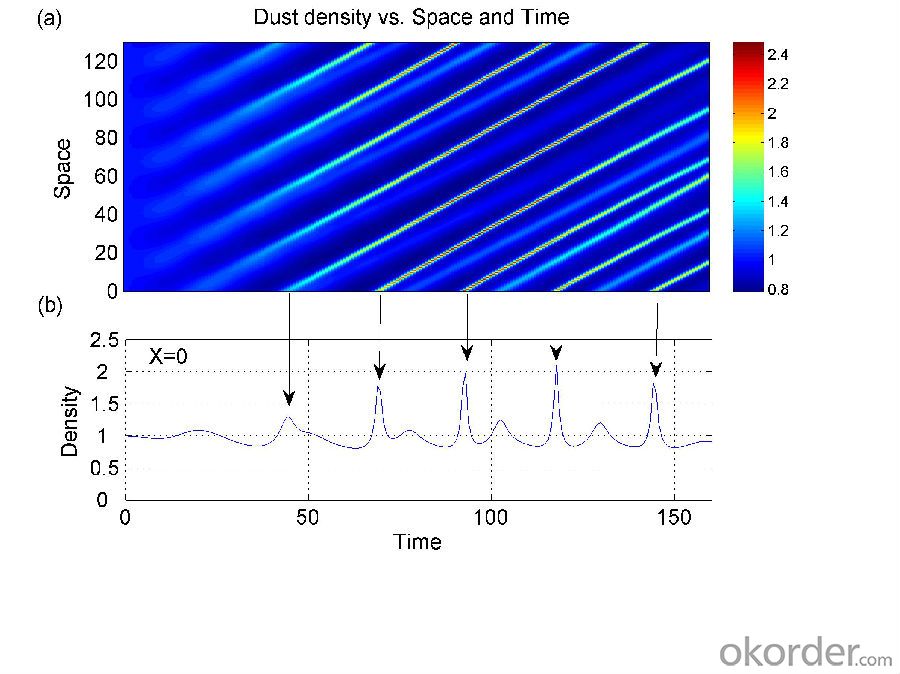
Main Feature of Hot Rolled Square Steel Billet 3SP Standard 130mm
1) Excellent corrosion resistance: The zinc layer provides a good protection of Pre-painted Galvanizeed Steel Sheet.
2) High heat resistance: The reflective surface of the material aids in efficiently reflecting the sunlight away and in turn reducing the amount of heat transmitted. The thermal reflectivity converts into energy savings.
3) Aesthetics: Pre-Painted Galvanized steel sheet is available in plethora of patterns and multiple sizes as per the requirements that given by our customers.
4) Versatility: can be used in the various areas.Standard seaworthy export packing: 3 layers of packing, inside is kraft paper, water plastic film is in the middle and outside GI steel sheet to be covered by steel strips with lock, with inner coil sleeve.
Applications of Hot Rolled Square Steel Billet 3SP Standard 130mm
1) Automotive bodies: filters, fuel tanks, etc.
2) Construction materials: roofings, welding pipes,
3) Electric and electronic appliances: computer cans, etc.
4) Steel cans: containers, etc.
5) Steel furniture: washing machines, refrigerators, microwaves, etc.
6) Drums
7) Office equipment: printer, recorders, etc.
8) Motors and transformers

Specifications of Hot Rolled Square Steel Billet 3SP Standard 130mm
| Classified symbol | Yield Point Minimum N/mm2 | Tensile Strength Minimum | Elongation Minimum % | Application | ||||
| N/mm2 | Nominal Thickness mm (t) | |||||||
| JIS | Yogic | 0.25-0.4 | 0.4-0.6 | 0.6-1.0 | 1.0-1.6 | |||
| G3312 | specification | |||||||
| CGCC | CGCC | -205 | -270 | -20 | -21 | -24 | -24 | Commercial |
| CGCD | CGCD | --- | 270 | --- | 27 | 31 | 32 | Drawing |
| --- | CG340 | 245 | 340 | 20 | 20 | 20 | 20 | Structural |
| CGC400 | CG400 | 295 | 400 | 16 | 17 | 18 | 18 | Structural |
| CGC440 | CG440 | 335 | 440 | 14 | 15 | 16 | 18 | Structural |
| CGC490 | CG490 | 365 | 490 | 12 | 13 | 14 | 16 | Structural |
| CGC570 | CG570 | 560 | 570 | --- | --- | --- | --- | Structural |
| ASTM Designation | Yield Point Minimum | Tensile Strength Minimum | Elongation Minimum % | Application | Q/BQB 445-2004(China standard) | ASM A653/A653M | JISG 3312 | |
| ksi(MPa) | ksi(MPa) | TDC51D+Z | (CS TYPE A+Z) | CGCC | ||||
| A653(M)-99 CS TYPE A,B,C | --- | --- | --- | Commercial | TDC52D+Z | CGCD | ||
| A653(M)-99 FS | --- | --- | --- | Lock Forming | TS250GD+Z | (G250+Z) | - | |
| A653(M)-99 DS | --- | --- | --- | Drawing | TS300GS+Z | (G300+Z) | CGC 400 | |
| A653(M)-99 SS Grade33(230) | 33(230) | 45(310) | 20 | Structural | TS350GD+Z | (G350+Z) | CGC490 | |
| A653(M)-99 SS Grade37(255) | 37(255) | 52(360) | 18 | Structural | TS550GD+Z | (G550+Z) | CGC570 | |
| A653(M)-99 SS Grade40(275) | 40(275) | 55(380) | 16 | Structural | ||||
| A653(M)-99 SS Grade50(345) | 50(345) | 65(450) | 12 | Structural | ||||
| A653(M)-99 SS Grade80(550) | 80(550) | 82(570) | --- | Structural | ||||
FAQ of Hot Rolled Square Steel Billet 3SP Standard 130mm
We have organized several common questions for our clients,may help you sincerely:
1. How Can I Visit There?
Our company is located in Tianjin City, China, near Beijing. You can fly to Tianjin Airport Directly. All our clients, from home or aboard, are warmly welcome to visit us!
2. How Can I Get Some Sample?
We are honored to offer you sample.
3. Why choose CNBM?
1, ISO, BV, CE, SGS approved.
2, Competitive price and quality.
3, Efficient service team online for 24 hours.
4, Smooth production ability(50000tons/month) .
5, quick delivery and standard exporting package.
6, Flexible payment with T/T, L/C, Paypal, Kunlun bank, etc.
- Q:If the casting speed is not steady, what will happen to the billet?
- First of all, the probability of slag circle, dimple, crack and blowhole on the surface of the billet will increase, and the slag inclusion in the slag will increase, which will affect the internal and surface quality of the slab.
- Q:How are steel billets cut and shaped into desired forms?
- Steel billets, which are essentially long, rectangular bars of raw steel, are cut and shaped into desired forms through a process known as steel billet shaping. This process involves several steps to transform the billets into different shapes and sizes, depending on the desired end product. The first step in shaping steel billets is to cut them into smaller, more manageable lengths. This is typically done using a sawing process, where the billets are cut using high-speed rotating blades. The saw blades can be either circular or bandsaw blades, depending on the specific requirements of the cut. Once the billets are cut into smaller lengths, they are then heated to a specific temperature in a furnace. This heating process is known as preheating and is essential for making the steel more malleable and easier to shape. The temperature and duration of preheating depend on the type of steel and the desired final shape. After preheating, the billets are transferred to a shaping machine, such as a rolling mill or a forging press. These machines exert high pressure on the heated billets to deform them into the desired shape. Rolling mills use a series of rollers to gradually shape the billets into various forms, such as bars, rods, or sheets. On the other hand, forging presses use immense force to reshape the billets by compressing them between dies or molds. During the shaping process, the billets may also undergo additional heat treatments, such as quenching or tempering, to enhance their mechanical properties. Quenching involves rapidly cooling the shaped billets to increase their hardness, while tempering involves reheating and slowly cooling them to improve their toughness and durability. Finally, once the steel billets have been shaped into the desired forms, they may undergo further processing steps, such as machining, grinding, or surface finishing, to achieve the required dimensional accuracy and surface quality. These additional processes ensure that the steel products meet the specified tolerances and surface requirements. In conclusion, steel billets are cut and shaped into desired forms by a combination of cutting, heating, shaping, and additional processing steps. This allows the raw steel material to be transformed into various products, ranging from bars and rods to sheets and other complex shapes, catering to the diverse needs of different industries.
- Q:How are steel billets measured and classified?
- The dimensions and chemical composition of steel billets are used to measure and classify them. Typically, the length, width, and height of a steel billet are measured to determine its size and shape, which impacts its usability in various applications. Moreover, the chemical composition of steel billets is examined to classify them. This involves analyzing the percentage of elements like carbon, manganese, silicon, and sulfur in the steel. The chemical composition is crucial for determining the mechanical properties of the billet, including tensile strength, hardness, and ductility. International standards, established by organizations such as ASTM or ISO, are usually followed for the classification of steel billets. These standards ensure consistency and quality in the measurement and classification processes across the industry. To obtain accurate dimensions, steel billets are commonly measured using calipers or precision measuring instruments. The length is measured from one end to the other, while the width and height are measured at their widest points. The measurements are often recorded in millimeters or inches, depending on the regional standards. Once the dimensions and chemical composition are determined, steel billets are classified into different grades or specifications. These classifications help identify the suitable applications and industries for the billets. For instance, specific grades may be suitable for construction purposes, while others are more suitable for manufacturing automotive parts or machinery. In summary, steel billets are measured and classified based on their dimensions and chemical composition. The dimensions are measured in terms of length, width, and height, while the chemical composition is analyzed to determine the percentage of various elements. These measurements and classifications are crucial in determining the usability and quality of steel billets in different applications and industries.
- Q:What are the main challenges in the quality control of steel billets?
- The main challenges in the quality control of steel billets include ensuring the correct chemical composition, proper and uniform microstructure, accurate dimensions, surface defects, and overall mechanical properties. Additionally, maintaining consistent quality throughout the production process, monitoring temperature and cooling rates, and detecting any potential contamination or impurities are also significant challenges.
- Q:How are steel billets used in the production of axles?
- Steel billets are used in the production of axles as a starting material. They are heated and shaped through forging or rolling processes to form the desired axle shape. This ensures the axle has the necessary strength and durability to support the weight and withstand the forces experienced during operation.
- Q:What is the role of steel billets in the manufacturing of fasteners?
- Steel billets play a crucial role in the manufacturing of fasteners as they serve as the raw material from which fasteners are produced. These billets are heated, molded, and shaped into various forms such as bolts, screws, and nails. The high strength and durability of steel make it an ideal material for fasteners, ensuring that they can withstand the loads and stresses they are subjected to in various applications.
- Q:How do steel billets contribute to the manufacturing of industrial machinery?
- The manufacturing of industrial machinery heavily relies on steel billets, which are semi-finished steel products molded into specific shapes and sizes. These billets serve as the raw material for producing various components and parts used in industrial machinery. To begin with, steel billets provide the necessary strength and durability required by industrial machinery. The high tensile strength and toughness of steel make it an ideal choice for withstanding heavy loads, vibrations, and extreme conditions that machinery often faces. By utilizing steel billets, manufacturers can ensure that the machinery they produce is capable of enduring these demanding conditions, thus increasing its reliability and longevity. Additionally, steel billets can be easily molded and shaped into different forms, allowing for the production of intricate and complex components. Precision-engineered parts tailored to specific functions and applications are often necessary for industrial machinery. Steel billets can be cast or forged into these intricate shapes, guaranteeing that the machinery operates with optimal efficiency and accuracy. Furthermore, steel billets possess excellent machinability, meaning they can be easily cut, drilled, and shaped using various machining techniques. This capability enables the creation of intricate details and tolerances required for the precise functioning of industrial machinery. The ability to machine steel billets with precision grants manufacturers the opportunity to produce components that fit together seamlessly, minimizing any potential performance issues. Moreover, steel billets offer a cost-effective solution for manufacturing industrial machinery. Steel is readily available and relatively inexpensive compared to other materials. Its superior strength-to-weight ratio also allows manufacturers to design lighter machinery without compromising its structural integrity. This reduction in manufacturing costs also makes the machinery more portable and easier to transport. Furthermore, steel billets provide excellent corrosion resistance, which is vital for industrial machinery operating in harsh environments. The protective oxide layer that forms on the surface of steel billets helps prevent rust and corrosion, ensuring that the machinery remains in optimal working condition even in challenging situations. In conclusion, the strength, durability, machinability, cost-effectiveness, and corrosion resistance offered by steel billets make them essential in the manufacturing of industrial machinery. These properties enable manufacturers to produce reliable, precise, and long-lasting machinery capable of withstanding demanding industrial applications.
- Q:How are steel billets used in the manufacturing of consumer goods?
- Steel billets are a crucial raw material used in the manufacturing of consumer goods. These billets are primarily utilized as feedstock in various metalworking processes such as hot rolling, forging, and extrusion. By shaping and forming the steel billets into desired shapes, manufacturers are able to produce a wide range of consumer goods like automobiles, appliances, construction materials, and machinery components. The high strength and durability of steel make it an ideal choice for consumer goods, ensuring reliability and longevity in the final products.
- Q:What are the different sizes and shapes of steel billets?
- Steel billets come in a variety of sizes and shapes depending on the intended use and production method. Generally, steel billets are rectangular in shape with varying dimensions. Commonly used sizes range from 100mm x 100mm to 300mm x 300mm, with lengths typically falling between 3 and 12 meters. In addition to the standard rectangular shape, steel billets can also be produced in other shapes to cater to specific requirements. Some examples include round billets, square billets, and octagonal billets. Round billets, as the name suggests, have a circular cross-section, while square billets have four equal sides. Octagonal billets have eight sides, providing increased surface area and improved thermal conductivity. The choice of size and shape of steel billets depends on various factors such as the type of steel being produced, the desired strength and durability, and the manufacturing process. These factors influence the final product's properties and its ability to withstand specific applications, such as construction, automotive manufacturing, or machinery production.
- Q:Can steel billets be used for making decorative items?
- Yes, steel billets can be used for making decorative items. Steel billets can be shaped, molded, and crafted into various designs and forms to create decorative items such as sculptures, furniture, artwork, and architectural features. The strength and durability of steel make it suitable for these purposes while adding a modern and industrial aesthetic to the decorative pieces.
1. Manufacturer Overview |
|
|---|---|
| Location | |
| Year Established | |
| Annual Output Value | |
| Main Markets | |
| Company Certifications | |
2. Manufacturer Certificates |
|
|---|---|
| a) Certification Name | |
| Range | |
| Reference | |
| Validity Period | |
3. Manufacturer Capability |
|
|---|---|
| a)Trade Capacity | |
| Nearest Port | |
| Export Percentage | |
| No.of Employees in Trade Department | |
| Language Spoken: | |
| b)Factory Information | |
| Factory Size: | |
| No. of Production Lines | |
| Contract Manufacturing | |
| Product Price Range | |
Send your message to us
Hot Rolled Square Steel Billet 3SP Standard 130mm
- Loading Port:
- Shanghai
- Payment Terms:
- TT OR LC
- Min Order Qty:
- 2000 m.t.
- Supply Capability:
- 10000 m.t./month
OKorder Service Pledge
OKorder Financial Service
Similar products
New products
Hot products
Related keywords
